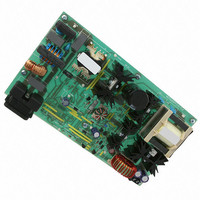NCP1605FORWGEVB ON Semiconductor, NCP1605FORWGEVB Datasheet - Page 14

NCP1605FORWGEVB
Manufacturer Part Number
NCP1605FORWGEVB
Description
EVAL BOARD FOR NCP1605FORWG
Manufacturer
ON Semiconductor
Datasheets
1.NCP1217P100G.pdf
(19 pages)
2.NCP1605ADR2G.pdf
(32 pages)
3.NCP1605FORWGEVB.pdf
(2 pages)
4.NCP1605FORWGEVB.pdf
(20 pages)
Specifications of NCP1605FORWGEVB
Design Resources
NCP1605FORWGEVB BOM NCP1605FORWGEVB Gerber Files NCP1605 EVB Schematic
Main Purpose
AC/DC, Primary and Secondary Side with PFC
Outputs And Type
1, Isolated
Voltage - Output
19V
Current - Output
8A
Voltage - Input
90 ~ 265VAC
Regulator Topology
Forward Converter
Frequency - Switching
133kHz
Board Type
Fully Populated
Utilized Ic / Part
NCP1217, NCP1605
Lead Free Status / RoHS Status
Lead free / RoHS Compliant
Power - Output
-
Lead Free Status / Rohs Status
Lead free / RoHS Compliant
For Use With/related Products
NCP1605FORWG
Other names
NCP1605FORWGEVBOS
Protecting the Controller Against Negative Spikes
is the designer’s duty to avoid the presence of negative
spikes on sensitive pins. Negative signals have the bad habit
to forward bias the controller substrate and induce erratic
behaviors. Sometimes, the injection can be so strong that
As with any controller built upon a CMOS technology, it
Figure 26. Another Way of Shutting Down the IC
Without a Definitive Latchoff State
ON/OFF
Q1
1
2
3
4
http://onsemi.com
8
7
6
5
14
internal parasitic SCRs are triggered, engendering
irremediable damages to the IC if a low impedance path is
offered between V
often the seat of such spurious signals, the high- -voltage pin
can also be the source of problems in certain circumstances.
During the turn- -off sequence, e.g. when the user unplugs the
power supply, the controller is still fed by its V
and keeps activating the MOSFET ON and OFF with a peak
current limited by Rsense. Unfortunately, if the quality
coefficient Q of the resonating network formed by Lp and
Cbulk is low (e.g. the MOSFET Rdson + Rsense are small),
conditions are met to make the circuit resonate and thus
negatively bias the controller. Since we are talking about ms
pulses, the amount of injected charge (Q = I * t) immediately
latches the controller that brutally discharges its V
capacitor. If this V
stored energy damages the controller. Figure 27 depicts a
typical negative shot occurring on the HV pin where the
brutal V
CC
discharge testifies for latchup.
CC
CC
and GND. If the current sense pin is
capacitor is of sufficient value, its
CC
capacitor
CC









